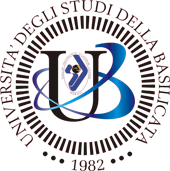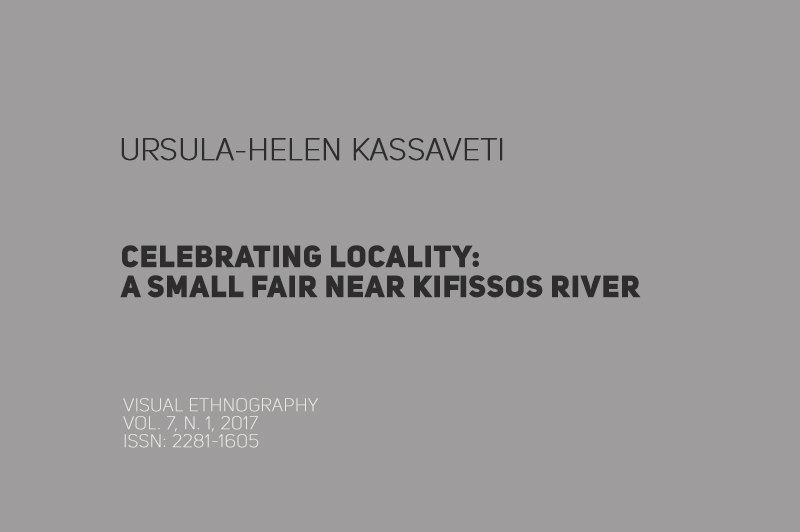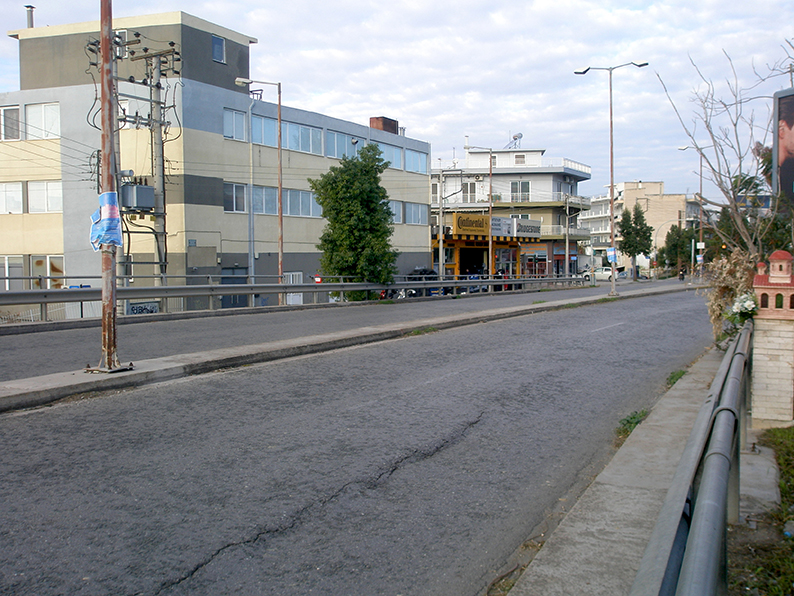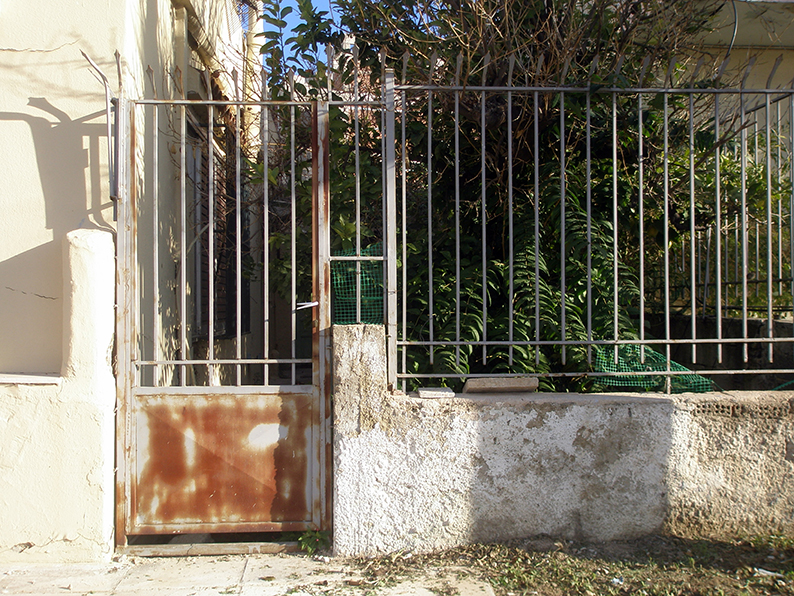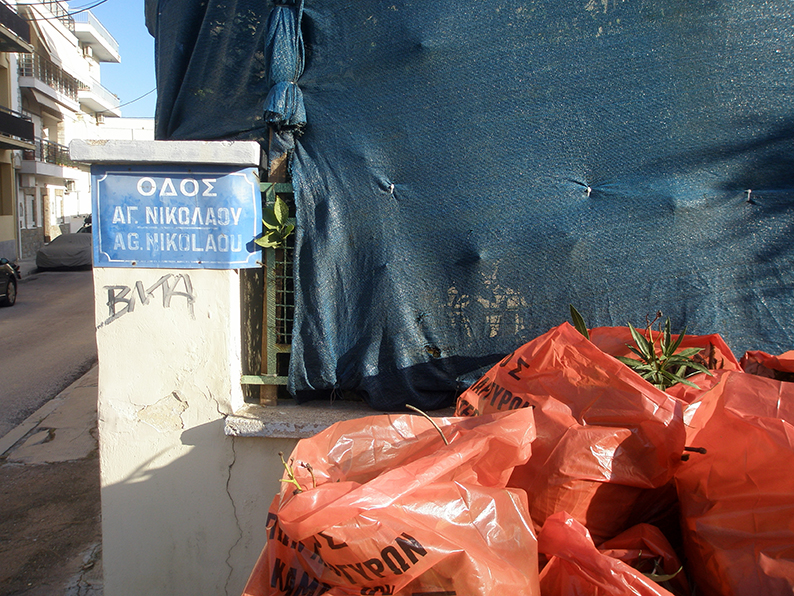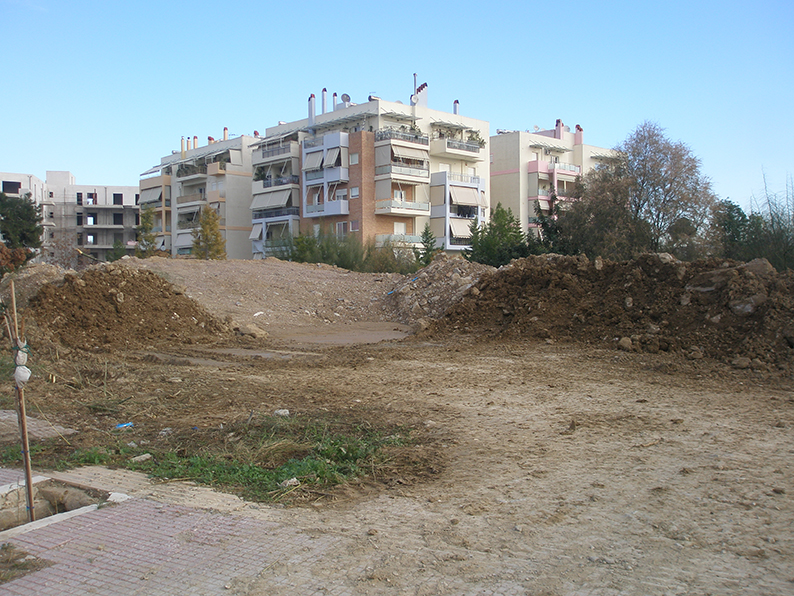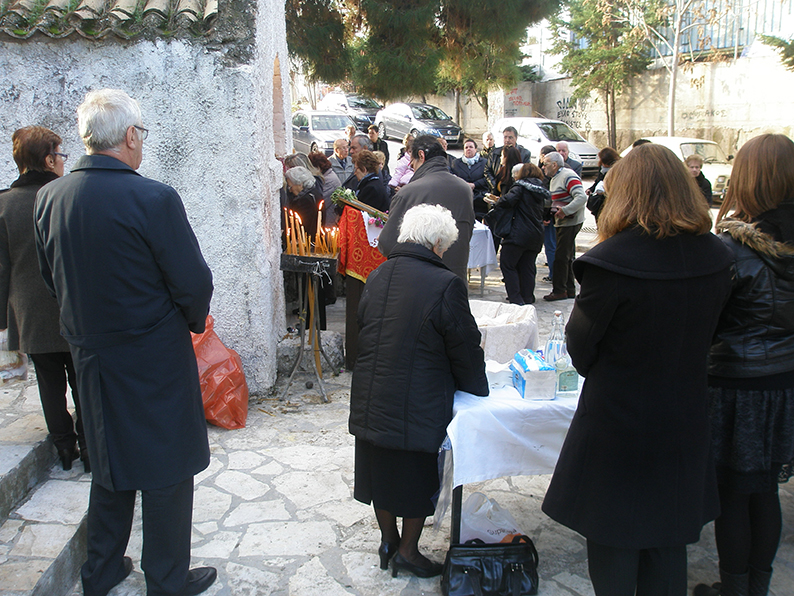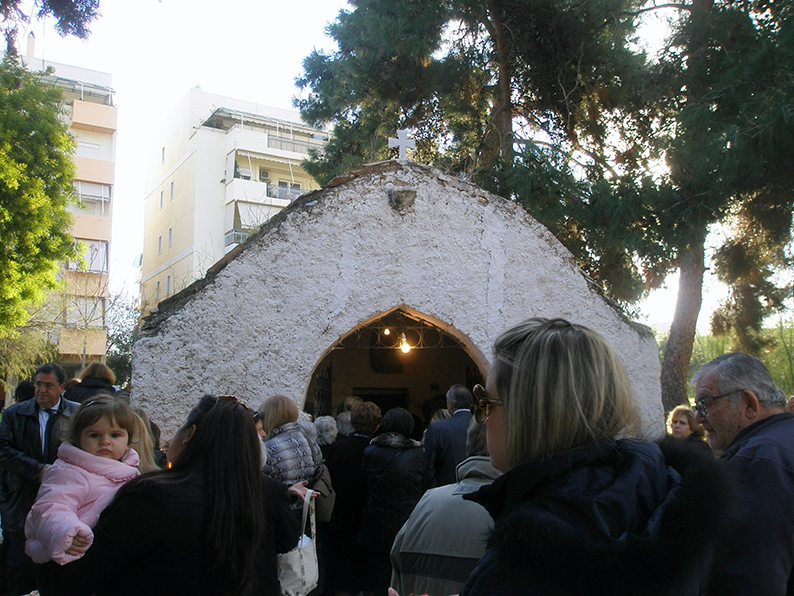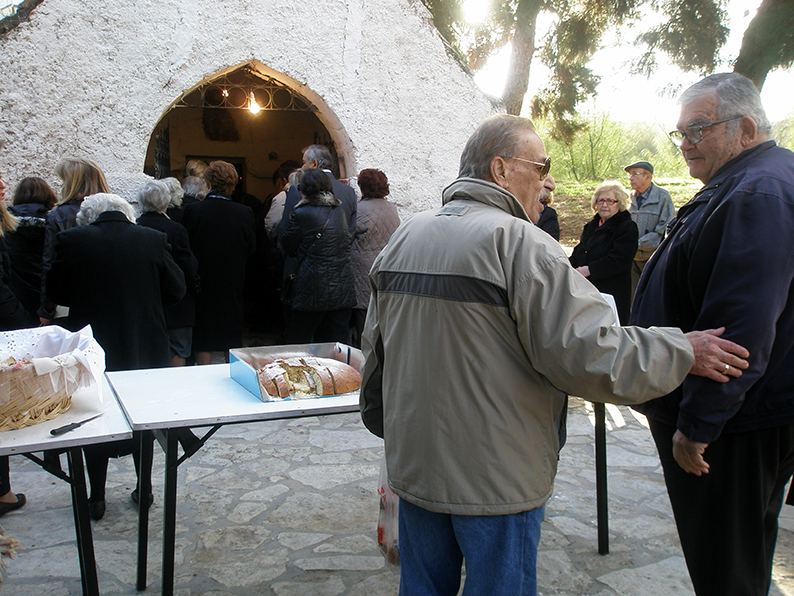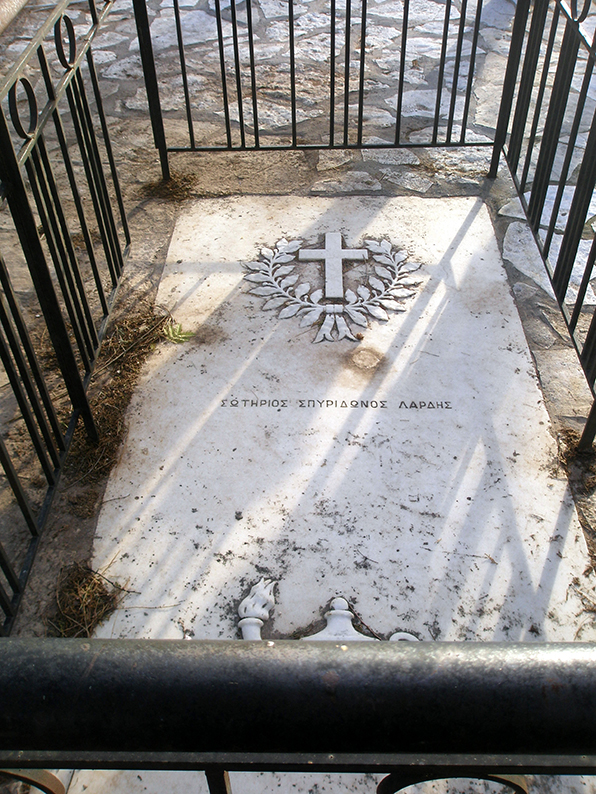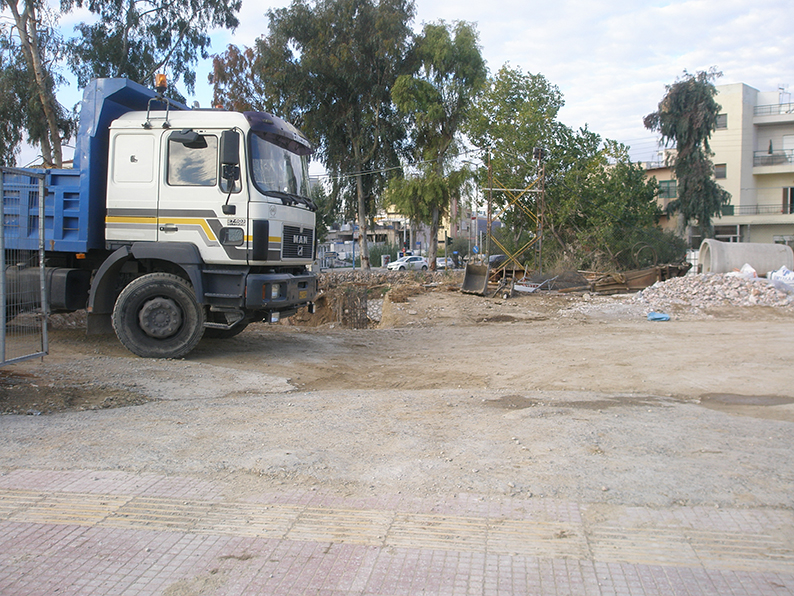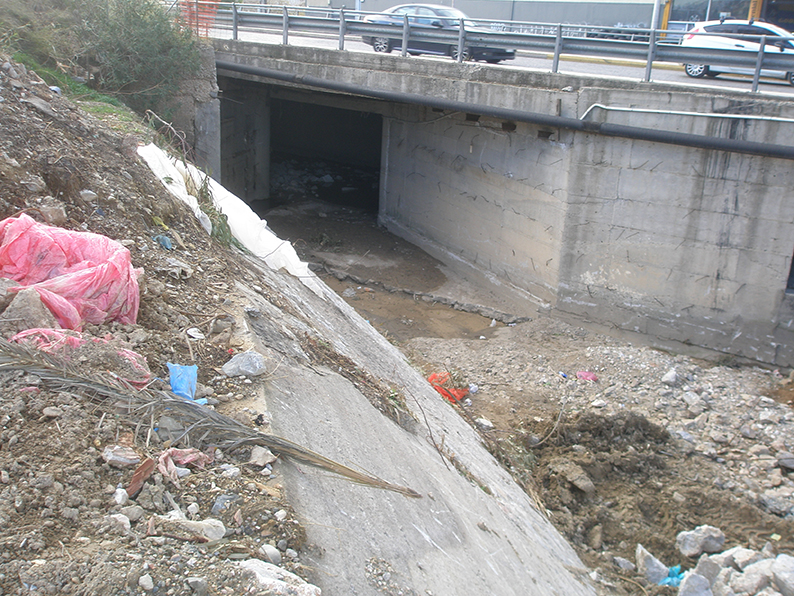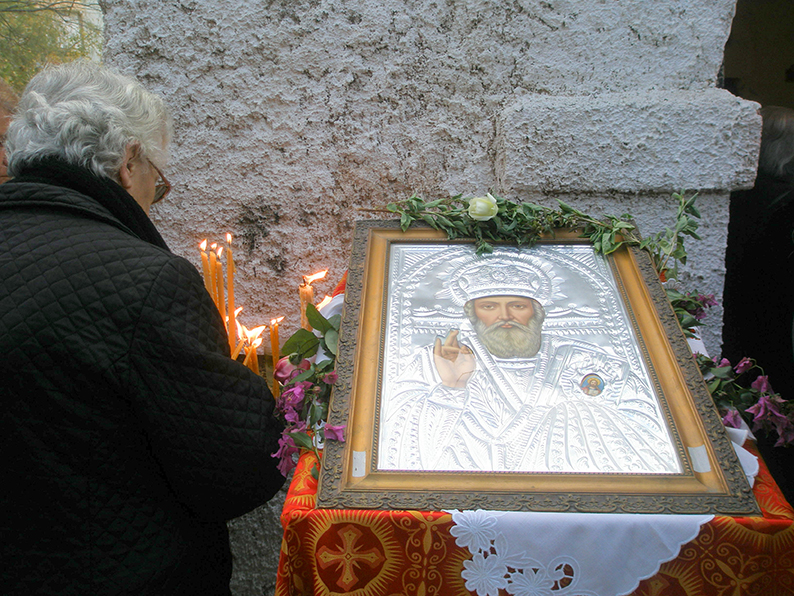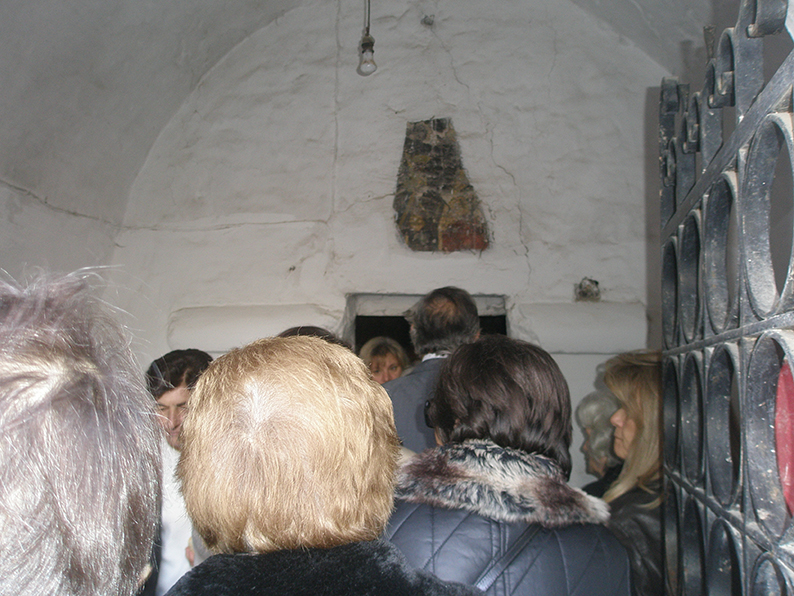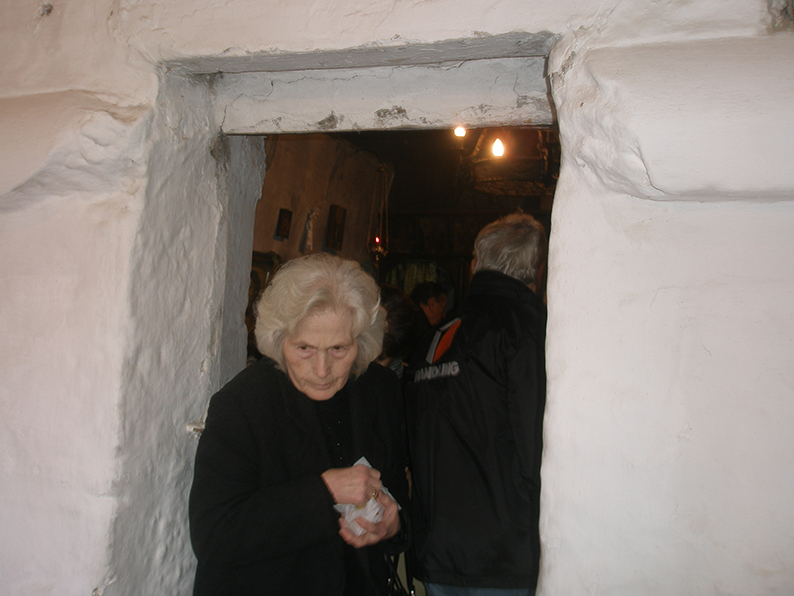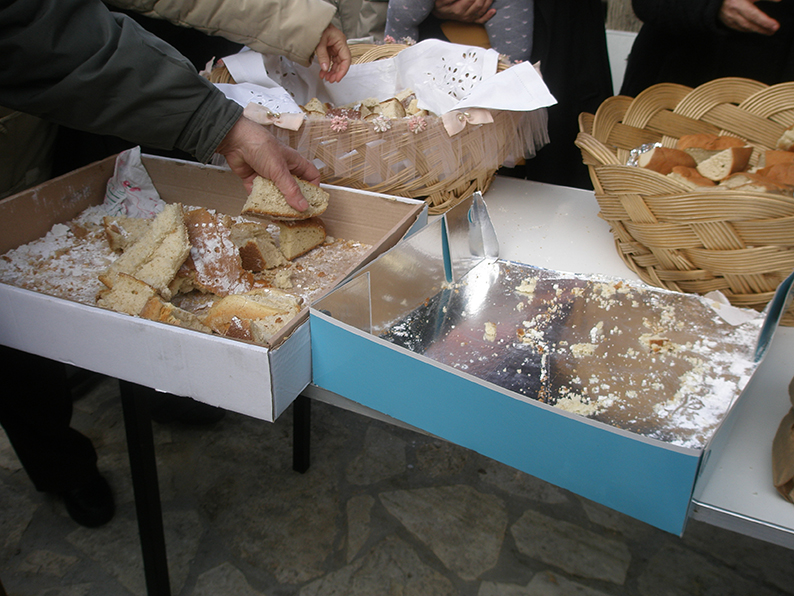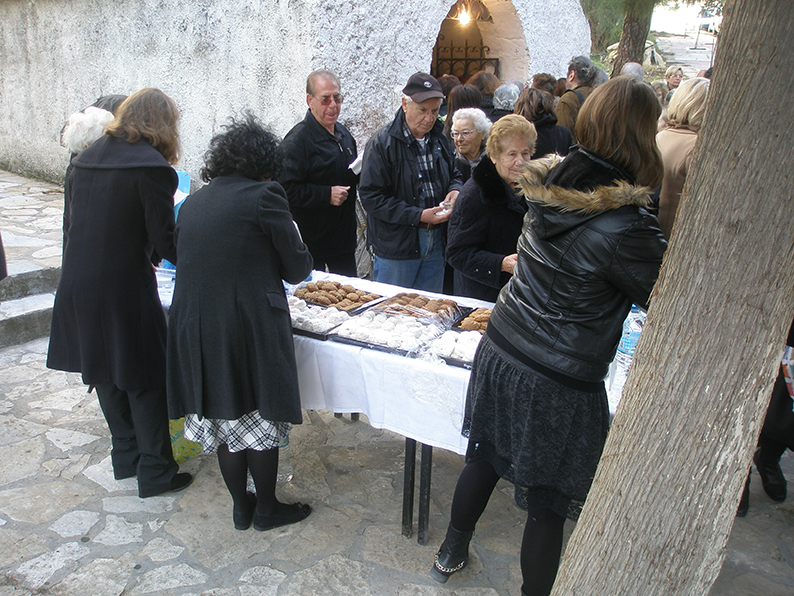-
Religious fairs in Greece are well-known for their variety and diversity, as they encompass three different aspects (Vozikas 2009): the religious, the commercial and the entertaining ones. Usually, a Greek religious fair, held apropos the memory of a Saint of the Eastern Orthodox Church, combines religious sentiments, as well as financial activities with street vendors selling snacks, clothing and various goods, and, finally, entertaining opportunities for children and adults, i.e, free cooked food for the gathering and the staging of singing and dancing performances. Although this typology is quite standard in the rural and urban Greece, it is quite striking that small medieval, and almost defunct or abandoned churches in the industrial outskirts of Athens offer the opportunity to older communities to celebrate the memory of a religious person and also to give prominence to their locality.
[ > GO TO NEXT PAGE] -
During my fieldwork at the districts situated at the former riverbeds of Kifissos river, which is the largest river flowing throughout the Attica plain and has now been enclosed since the late 1990s under tons of cement, I came across various private churches, which belonged to very old field proprietary-owners of the area. In their large, fertile -due to the Kifissos’ water- and dense fields, they dedicated small churches to honor and protect their first-born daughters. The majority of these churches can still be found in the East and West riverbeds of Kifissos, where since the late 1960s factories or car-dealerships have been installed.
[ > GO TO NEXT PAGE] -
Although lots of them are considered as a disregardful relic of the past or heavily destroyed due to the years and the human neglect, some of them, once in a year, honor the memory of the local saint and celebrate the collective memory of the locals, who organize small fairs, attempting at reinforcing a fragmentary locality. One of them was St. Nicholas church, situated at Mykoniatika (=a neighborhood built up by internal immigrants from Mykonos island in the 1960s) district. Approximately 4,5 Km from the centre of Athens (Omonoia Square), it is located at a sideway of Andreas Papandreou Avenue, which is perpendicular to Kifissos Avenue, underground of which the older river flows. The fair was organized by older inhabitants and took place in two days. Although the urban landscape near Kifissos could be seen as remaining “in a state of dispersed and alienated actuality, as kernel and virtuality” (Lefebvre 1996: 148), these tiny districts in their festive instances offer some live examples of their local “little tradition” (Redfield 1973: 42), still active in the 21st century.
-
On our way to the fair: Aspect of the urban surroundings of St. Nicholas. Andreas Papandreou Avenue, which was named after the former Prime Minister of Greece during the 1980s and the 1990s, hides underneath an affluent of Kifissos. The latter was enclosed in the late 1990s as well as the whole river. On the former left and right river beds of the Giannoula (“little Johanna”) affluent, loads of cement form two back roads, filled with either rubbish, cars which belong to workers of the near-by factories and void advertising tableaus. The Avenue plays a neuralgic role, as it literally divides three municipalities, Peristeri, Ilion (Nea Liossia) & Aghioi Anargyroi, and it accommodates all traffic from Kifissos Avenue.
-
Two old inhabitants of the Aghios Ioannis Theologos (St. John the Theologian) neighborhood, situated right under the Andreas Papandreou Avenue, attend the local fair. Both D. K. (b. 1947) and G. E. (b. 1945), who attended the same primary school, came across each other in front of the church. There, they recalled shortcuts from the 1950s and the 1960s decade, when the same liturgy and fair for St. Nicholas took place and they attended it. Although they are both old residents of the area, their conversation and interaction was caught by the eyes of the 2nd generation-Mykoniatika-locals, who disregarded their enthusiasm, when they evoked memories of the fair
-
Sotirios Spyridon Lardis was a tough rich field-proprietor in Mykoniatika and in the riverbanks of Kifissos, where he used to do business. He owned a small rural villa in his field, where, according to the local informants, before and after WWII he held all-night parties with lots of wine and card games. As soon as he grew old and lost some of his fortune, the parties became lesser as well as the people who befriended. His last wish was to be buried near the small church of St. Nicholas
-
60 years ago, this place was covered in orchards, trees, small villas and some workers’ houses. Flora was dense due to the constant flow of water, provided by Kifissos river. Now, this image has been totally distorted: after the establishment of the 7-year-old military junta of the Colonels (1967-1974), all the Kifissos surroundings, including Mykoniatika and the place around St. Nicholad church, was forced to foster the heavy and light industry of Athens
Right just opposite from the church lies an uncovered part of “Giannoula”. This point was among all held responsible for the tremendous flood which hit the neighborhoods of Aghios Ioannis Theologos, Mykoniatika and Aghios Fanourios after a really heavy rainfall in the November of 1961. A near-by factory had thrown lots of wooden boards on its riverbanks that actually made the river overflood. Lots of victims, dead or alive, lost their fortunes in one night, as the flood turned the place into a sad swampland and was officially baptized as a “national disaster”. However, in the course of years and due to lack of any municipal initiative and of restoration of the rivers eco-system alongside with the accumulating pollution from the rubbish, the government decided to enclose one of the last open parts of Kifissos. Work has been taking place for years now and I was not allowed to take pictures due to the “risk” involving the respective constructions for covering the river
Celebrating St. Nicholas. A typical icon of the Eastern Orthodox Church decorated with flowers. An old woman lights a candle in memory of the Saint
Waiting for the Holy Communion. The old church has a narrow opening, no windows and a very short capacity, so one should be very patient to enter it
After the Holy Communion. An old woman is holding pieces of leavened bread
After the Liturgy, blessed bread with caster sugar is cut in large pieces and it is distributed between the attendants, alongside with leavened bread, some of which was used for the preparation of the Holy Communion. As it is a small-scale fair, particularly known only to the locals and to neighboring districts, no commercial activities take place, although one of the informants (m, b. 1947) could remember street vendors selling cheap toys, which were popular after WWII in Greece, or candles
While waiting in a long queue to participate in the communion in honor of the Saint, locals have set up metallic tables, on which traditional Greek Christmas sweets, such as “melomakarona” and “kourambiedes”, and tsipouro (=a spirit from Northern Greece) are offered for free as the fair is coming to an end
Refbacks
- There are currently no refbacks.
ISSN Print 2499-9288
ISSN Online 2281-1605
Publisher Edizioni Museo Pasqualino
Patronage University of Basilicata, Italy
Web Salvo Leo
Periodico registrato presso il Tribunale di Palermo con numero di registrazione 1/2023

